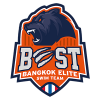Content
- Best OMS Trading Systems [comparison & questions for providers]
- What an Order Management System (OMS) Does for Finance, Business
- Eliminate manual processes and minimize operational risk
- Master Your Middle Office with MOSAIC
- Purpose-built foryour investment strategy and fund lifecycle
- Meet the challenges of multi-market, multi-asset trading head on
- Key Technology Benefits of INDATA’s Trade Order Management System
- Key Questions to for the Top OMS Providers
Read how State Street and Charles River are supporting our clients with offerings that help manage the move to T+1. This interactive PDF that covers T+1 capabilities order management system trading across all business lines, including custody, FX, and post trade offering. An order management system should seamlessly handle multiple asset classes (stocks, bonds, derivatives, etc.) and various order types (market, limit, stop, etc.), catering to diverse trading strategies. These benefits merely scratch the surface of what a trade order management system can offer. The adoption of such a system is not just advantageous; it is essential for traders aiming to make informed, intelligent decisions. Embracing this technology enhances the trading experience and equips traders with the tools they need to thrive in the dynamic world of finance.
Best OMS Trading Systems [comparison & questions for providers]
The OMS will then translate those instructions into precise sell orders and send the information to the trader. An OMS can https://www.xcritical.com/ facilitate the allocation of trades across multiple accounts or funds based on predefined rules. This feature is particularly useful for asset managers who manage multiple portfolios or funds and need to allocate trades proportionally and in a compliant manner. OMSs sometimes offer portfolio modelling tools that help portfolio managers assess the impact of potential trades on their portfolios. They can simulate different scenarios, analyse the potential risks and returns, and rebalance portfolios to align with investment objectives. This functionality often overlaps with Portfolio Management Software to create a Portfolio and Order Management System (POMS).
What an Order Management System (OMS) Does for Finance, Business
Let’s start by getting a general definition of what a Trade Order Management System (OMS) is before exploring its history, functionality and what’s available in the modern OMS vendors marketplace. Less than 26µs for 99.5% of messages (including the network hops) for the “business” IPC layer. The latency introduced by the core OMS layer can be configured to be less than 1µs.
- Enhance your trade lifecycle with Haywood’s SaaS-based Trade Order Management System (OMS) that manages order flows, monitors positions, and tracks investment portfolios.
- Trading stock online in our modern world would be impossible without a robust OMS.
- The OMS can also route orders directly to sell-side brokers, especially in simple trading cases.
- A special attention is payed to unit tests, automated component-centric and cross-system integrations tests, performance and stress tests.
Eliminate manual processes and minimize operational risk
An order management system is a vital tool in the world of financial markets, serving as the backbone of efficient and effective securities trading. It streamlines the process of handling various types of securities orders, providing transparency and enhancing profitability for traders and investors. A high-performance order management solution is key to empowering modern-day broker-dealers who are chasing goals of trade order optimization and pre-trade compliance.
Master Your Middle Office with MOSAIC
Optimize deal management with deal tracking software designed to effectively monitor opportunities and potential investors across every interaction. Analyze data and recommend options that consider how and where customers want orders that are shipped, time-to-delivery, and cost. Some OMSs cut corners by not having complete cash data, using a “flush and fill” approach to either cash or positions.
Purpose-built foryour investment strategy and fund lifecycle
Our solutions are geared towards multi-asset trading that becomes crucial in the investment banking brokerage industries to achieve uniformity, improve efficiency, risk transparency and promote cross-selling on various levels. An OMS provides a high-level view of a portfolio with order generation happening. The OMS follows the instruction of users to reduce the percentage of an asset with potential exposure. Use advanced trading capabilities in one platform for full trade order management, integrating OMS and EMS from any provider.
Meet the challenges of multi-market, multi-asset trading head on
The event-driven and transactional nature of the system allows us to capture all the system and business events that improves the transparency. The real-time reporting capability can be tailored to meet the specific reporting and compliance requirements. Integrations with internal and third-party systems are critical to running an efficient operation. Flexible APIs and an extensive library of on-demand data interfaces to integrate platforms across the enterprise.
Key Technology Benefits of INDATA’s Trade Order Management System
It might also need functionality that allows it to synchronize orders over different channels e.g. if a customer orders a product online and picks it up from a physical store – the omni-channel experience. We provide continuous product training for the first and second-level support staff. Our development team can provide the third level support and help handling production emergencies.
When an order is executed on the sell-side, the sell-side OMS must then update its state and send an execution report to the order’s originating firm. For review, the buy-side is a segment of Wall Street made up of investing institutions such as mutual funds, pension funds, and insurance firms that tend to buy large portions of securities for money management purposes. However, communicating transactions can also be done through the use of a custom application programming interface (API). The FIX protocol links hedge funds and investment firms to hundreds of counterparties around the world using the OMS. An order management system (OMS) is an electronic system developed to execute securities orders in an efficient and cost-effective manner. Introducing AlphaDesk Mobile, which enables users to gain access to their real-time positions, P&L and trading without being tied to their desktop.
The OMS holds the knowledge of client, care, market-side and custom orders and provides a holistic picture of the current state of the execution flow it is deployed to manage. To understand the difference, it’s helpful to consider the primary users of each system. Order Management Systems are typically used by portfolio managers, while Execution Management Systems are utilised by traders. The OMS provides portfolio managers with a high-level working view of the portfolio and generates orders based on their instructions. For example, a portfolio manager may decide to reduce the exposure to a specific stock and issue instructions to the OMS accordingly.
TOMS plays a crucial role in streamlining the entire trade lifecycle, from the point of order generation to its execution, allocation, and post-trade processing. It serves as a central hub for traders, portfolio managers, compliance teams, and operations personnel to collaborate and execute trades seamlessly. By leveraging the features and functionalities of an OMS, investment managers can optimise their trading operations and drive better investment outcomes. Its capabilities enable streamlined processes, increased operational efficiency, and better decision-making for investment managers.
Access comprehensive pre-trade, post-trade, and real-time compliance with complementary managed services, available whenever users need it. Automating and scaling the transaction management processes, our OMS greatly reduces the costs related to portfolio and securities trading management. The system diligently supervises trading activities to ensure they meet regulatory standards and internal control requirements throughout the entire order lifecycle. STT OMS supports end-of-day compliance reporting and detailed trade reporting to seamlessly integrate into existing back-office processes. Set and update pre-trade risk controls, manage and interact with order flow and positions in real-time via either the STT REST API or advanced OMS Console. Finding the right partner is crucial to help ensure readiness, manage risk and avoid failed settlements.
Fully customize your experience and integrate with proprietary and third-party applications. FlexOMS offers extensive rich APIs, seamlessly embedding multiple languages and protocols within one unified platform. FlexOMS’s Integrated Global Platform unifies regional trading hubs into one comprehensive network, providing a singular vision across all markets and geographies. We cater to market-specific needs by providing full local market support and customizability, ensuring you’re always operating with the best balance of global versus local capability without compromising on visibility or control. Gain greater insights with fully integrated business intelligence reporting capabilities. With more accurate and timely reporting, organizations can make better data-driven decisions.
A combined solution streamlines the entire firm and ties in with downstream systems via open APIs. Integration with internal and third-party data is crucial for decision-making and efficiency. SS&C Eze is helping 1,900 global asset managers transform their investment process to optimize operational and investment alpha and grow their business. Keep a pulse on market trends, real-time analytics, and performance metrics of your clients to boost your operational efficiency. Robust risk management tools and analysis are essential for real-time risk assessment, helping to prevent excessive exposure and mitigate trading risks effectively.
Traders can closely monitor the performance of their operations and the efficiency of their production methods, leading to improved productivity. For example, an OMS that facilitates the ability to trade different asset classes with screens and workflows tailored to those assets increases efficiency. Having complete portfolio views and dashboards in your portfolio tracking software, where all data is consolidated, increases your oversight. A platform’s ability to integrate with current tools and processes is the key to lower operational risk and increase scalability (automation). If the OMS vendor can’t offer the integration capabilities you need, you’ll struggle to scale your business to the desired level.
Accelerate innovation and shorten your time to market to meet and exceed customer expectations. OMS (Order Management System) – Trade Order Management System would traditionally have taken care of the order i.e. managing the order and the trade flow between the client and the various execution venues. Orders being executed today are multi-faceted and complex – manual methods of capturing orders, routing and reporting simply wouldn’t work. An Order Management System (OMS), is a computer software system used in various industries designed to help manage order entry and processing. Our OMS solutions are intuitively modularised, well-documented and are easily maintainable. The design supports ongoing updates of individual components and would not typically require re-deployment of the entire system.




